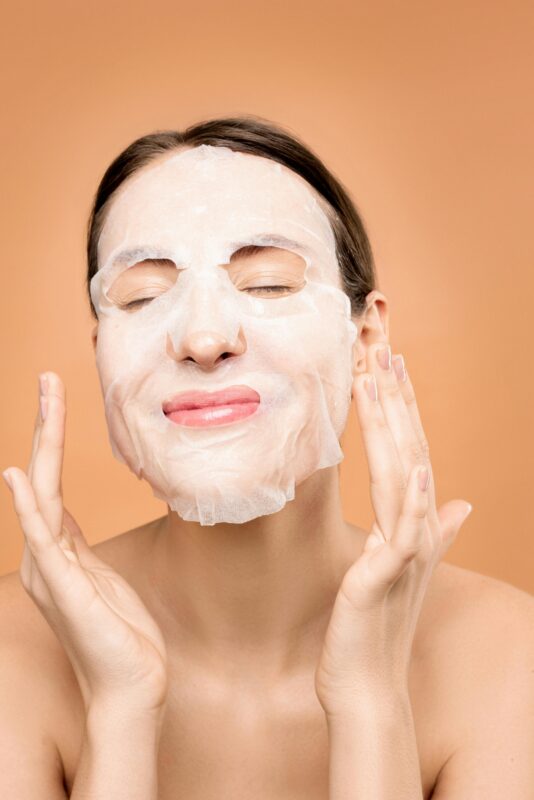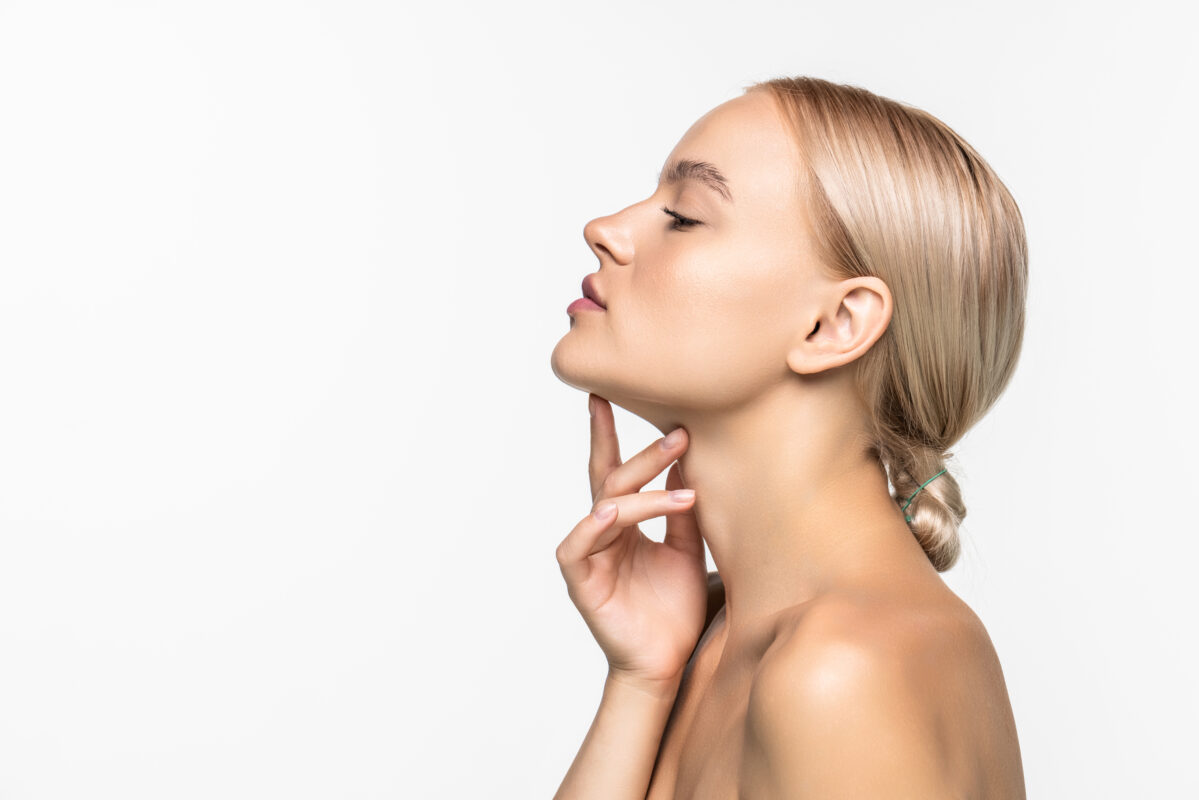Introduction: Unveiling the Anti-Aging Secrets to Timeless Skin
The pursuit of youthful, glowing skin is a desire shared by many. As we age, we naturally want to preserve a vibrant complexion, and that’s where the concept of anti-aging comes into play. Anti-aging techniques, products, and lifestyle changes have become essential parts of modern skincare routines. However, the aging process, combined with external environmental factors, can impact the health of our skin. Fine lines begin to form, wrinkles become deeper, and elasticity gradually declines. Thankfully, there are countless methods, backed by science, to fight these visible signs of aging. In this comprehensive anti-aging guide, we’ll explore expert tips and actionable steps to help rejuvenate your skin and restore a youthful glow. From understanding the biological processes behind skin aging to making lifestyle changes and using potent anti-aging ingredients, this guide provides everything you need to make well-informed choices and achieve healthier, younger-looking skin.
Understanding the Science of Skin Aging
To effectively address skin aging, it’s important to first understand the science behind it. Skin aging is driven by a combination of internal (intrinsic) and external (extrinsic) factors.
Intrinsic Aging: The Natural Process
Intrinsic aging is the natural, unavoidable aging process governed by our genetics. As we grow older, the production of collagen and elastin, the proteins responsible for skin structure and elasticity, naturally decreases. As a result, the skin starts losing its support, making it more prone to wrinkles and fine lines. Additionally, the skin’s ability to shed dead cells slows down, which results in a duller complexion. Furthermore, the skin’s moisture retention capacity diminishes, leaving it more susceptible to dryness and damage.
Extrinsic Aging: External Influences
On the other hand, extrinsic aging refers to the premature aging of the skin caused by environmental factors. Among these, sun exposure is the most significant contributor. Ultraviolet (UV) rays from the sun can break down collagen and elastin, causing wrinkles, sunspots, and a rough texture. Other environmental factors, such as pollution, smoking, and poor nutrition, also accelerate aging. Pollution releases free radicals that harm skin cells, while smoking reduces blood flow to the skin, and a poor diet deprives the skin of vital nutrients. Therefore, recognizing these external factors is the first step in developing an effective anti-aging strategy.
Building Your Anti-Aging Skincare Routine: The Core Principles of Youthful Skin
A well-structured skincare routine is essential for preventing and reversing visible aging signs. Here are the key elements of a successful anti-aging skincare plan:
Cleansing: The Basis of Healthy Skin
First and foremost, begin your routine with a gentle cleanser. Look for a product that effectively removes dirt, oil, and impurities without disrupting the skin’s natural moisture barrier. Harsh cleansers can strip the skin of essential oils, which could lead to dryness and irritation, ultimately worsening aging signs. Therefore, choose cleansers with hydrating or soothing ingredients to support the skin’s natural functions.
Exfoliation: Revealing Smooth and Radiant Skin
Additionally, regular exfoliation is vital for removing dead skin cells, which results in a brighter and more even skin tone. This process allows other anti-aging treatments to absorb better. You can choose between chemical exfoliants, such as AHAs (glycolic and lactic acids) and BHAs (salicylic acid), or physical exfoliants like gentle scrubs. However, be careful not to over-exfoliate, as this can cause irritation. Exfoliating once or twice a week is ideal, depending on your skin’s needs.
Toning: Restoring Balance to Your Skin
Afterward, toners are designed to balance your skin’s pH after cleansing and prepare it for the next steps in your skincare regimen. Opt for toners with hydrating or soothing ingredients, and avoid those with harsh alcohols that can strip moisture. Well-formulated toners can also help target specific concerns, such as redness, acne, or dullness, ultimately enhancing the overall effect of your anti-aging routine.
Serums: Powerful Concentrated Formulations
Next, serums are rich in active ingredients that address specific skin issues. For anti-aging, consider serums with ingredients such as:
- Retinoids: These derivatives of vitamin A are well-known for stimulating collagen production, reducing fine lines, improving skin texture, and fading pigmentation. Start with a lower concentration and increase gradually.
- Vitamin C: A potent antioxidant that protects the skin from oxidative damage, brightens the complexion, and promotes collagen synthesis.
- Hyaluronic Acid: This ingredient draws moisture into the skin, plumping it and minimizing fine lines.
- Peptides: Short amino acid chains that encourage collagen and elastin production, enhancing skin firmness and reducing wrinkles.
- Niacinamide (Vitamin B3): Known for its ability to strengthen the skin barrier, reduce redness, and even out skin tone.
Moisturizing: Ensuring Hydrated Skin
In addition, moisturization is key to keeping your skin hydrated and maintaining a healthy skin barrier. Choose a moisturizer suitable for your skin type. Even those with oily skin require hydration. Hydrated skin looks plumper and smoother, making fine lines less noticeable. Look for moisturizers with ingredients like ceramides, glycerin, and hyaluronic acid. Proper moisturizing helps create a protective layer that locks in hydration and shields the skin from external stressors.
Sunscreen: Your Ultimate Anti-Aging Tool
Above all, never skip sunscreen in your anti-aging routine. A broad-spectrum sunscreen with an SPF of 30 or higher is essential for protecting the skin from harmful UVA and UVB rays. This helps prevent premature aging, dark spots, and skin cancer. Apply sunscreen every morning, regardless of the weather, and reapply every two hours, especially if sweating or swimming. Sunscreen is crucial because UV radiation accelerates the breakdown of collagen and elastin, leading to premature wrinkles and sagging.
Targeted Treatments: Addressing Specific Skin Concerns
In addition to the core steps, you can incorporate treatments to address specific concerns such as dark circles, crow’s feet, or age spots.
Lifestyle Factors: Nourishing Your Skin from Within
While a good skincare routine is essential, your lifestyle choices also play a major role in maintaining healthy, youthful skin. Here are some lifestyle habits to complement your anti-aging efforts:
Nutrition: Fueling Your Skin
For instance, eating a balanced diet rich in antioxidants, vitamins, and minerals is essential for healthy skin. Include plenty of fruits, vegetables, whole grains, and lean proteins. Foods like berries, leafy greens, and green tea are rich in antioxidants, while omega-3 fatty acids (found in fish and flaxseeds) help reduce inflammation. On the other hand, minimize processed foods and sugary drinks, which can contribute to inflammation and accelerate aging. A nutrient-dense diet helps to maintain skin’s firmness, elasticity, and radiance.
Hydration: The Key to Glowing Skin
Moreover, drinking enough water is vital for maintaining skin hydration. Dehydration can cause your skin to look dull and accentuate fine lines. Therefore, aim for at least eight glasses of water per day. Hydration not only supports healthy skin but also promotes a glowing complexion, enhancing its natural luminosity and plumpness.
Sleep: Allow Your Skin to Regenerate
Similarly, quality sleep is essential for skin rejuvenation. During sleep, your body repairs itself, including the skin. Aim for 7-9 hours of rest each night to give your skin time to regenerate. Lack of sleep can cause dark circles, dullness, and more prominent aging signs. Sleep allows skin cells to repair and renew, helping maintain a youthful appearance.
Stress Management: Minimizing Skin Damage
In addition, chronic stress can lead to inflammation, breakouts, and premature aging. Practicing relaxation techniques such as yoga, meditation, and deep breathing exercises can help manage stress and protect your skin. Stress triggers the release of cortisol, a hormone that can break down collagen, leading to the formation of wrinkles.
Exercise: Promoting Healthy Circulation
Furthermore, regular physical activity enhances blood circulation, delivering essential oxygen and nutrients to the skin. It also helps reduce stress, contributing to healthier-looking skin. Physical activity increases collagen production, maintaining skin’s elasticity and resilience.
Professional Treatments: Enhancing Your Anti-Aging Routine
In addition to your at-home routine, professional treatments can provide more dramatic results. Consider consulting with a dermatologist or aesthetician to find the right treatment for your skin:
- Chemical Peels: These treatments use a chemical solution to exfoliate the skin, revealing smoother, brighter skin underneath. They help with wrinkles, pigmentation, and acne scars.
- Microdermabrasion: A non-invasive treatment that uses tiny crystals to exfoliate the skin, improving its texture and reducing fine lines.
- Microneedling: This technique uses fine needles to stimulate collagen production, which can improve the appearance of wrinkles and scars.
- Laser Resurfacing: Laser treatments remove damaged skin layers or stimulate collagen production, addressing wrinkles, sun damage, and scars.
- Injectables (Botox and Fillers): Botox relaxes muscles to reduce dynamic wrinkles, while dermal fillers add volume and smooth out wrinkles.
- Radiofrequency and Ultrasound: These treatments use energy to stimulate collagen production and tighten the skin.
Navigating the Anti-Aging Product Market: Making Informed Choices
With so many products available, choosing the right anti-aging products can be overwhelming. Here are some tips:
- Know Your Skin Type: Different skin types require different formulations.
- Prioritize Key Ingredients: Look for scientifically-backed ingredients like retinoids, vitamin C, peptides, and hyaluronic acid.
- Read Product Labels: Avoid products with harsh chemicals, fragrances, or dyes that could irritate your skin.
- Choose the Right Texture: Consider the texture of products. Lightweight serums penetrate deeply, while thicker creams provide more moisture.
- Don’t Fall for Unrealistic Claims: Be cautious of products promising miracle results. Anti-aging is a gradual process.
- Patch Test New Products: Always test a new product on a small skin area before applying it to your entire face.
- Consult a Dermatologist: If you’re uncertain about which products to choose, a dermatologist can offer personalized recommendations.
Setting Realistic Expectations: The Path to Healthy Aging
It’s important to approach anti-aging with realistic expectations. While you can significantly improve your skin’s health and appearance with the right routine, you cannot halt the aging process entirely. The goal is to age gracefully and maintain vibrant, healthy skin throughout your life. Consistency is essential, and patience is a virtue when it comes to achieving long-term results.
Conclusion: Embrace Radiant Skin for Life
Achieving and maintaining youthful, radiant skin is an ongoing journey. It requires a holistic approach that combines a scientifically-backed anti-aging skincare routine, healthy lifestyle choices, and professional treatments. By embracing these strategies and committing to consistency, you can achieve timeless radiance and embrace the beauty of aging gracefully.






